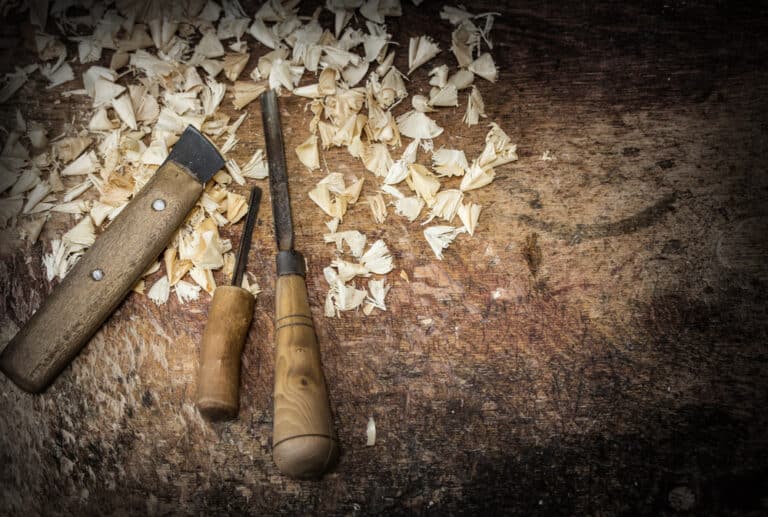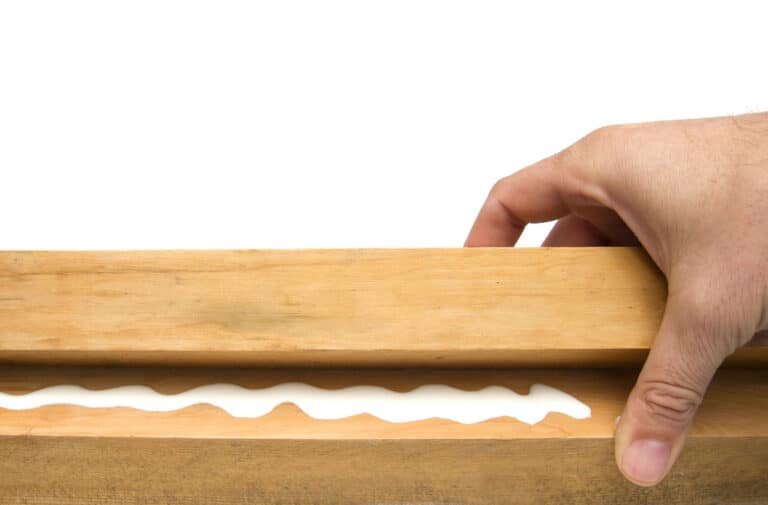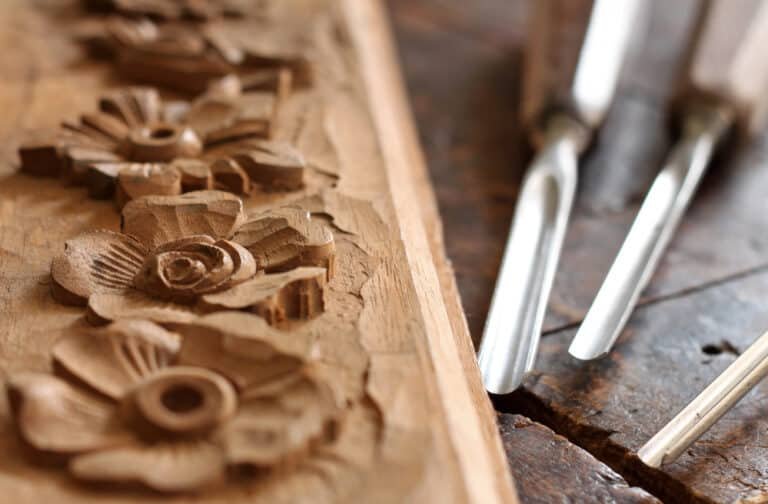So, you’re curious about wood carving and wondering if it’s difficult to master?

Wood carving can be hard for beginners but becomes easier with practice and proper technique. The difficulty depends on the complexity of the design and the type of wood being used. As you gain experience and develop your skills, you will find that wood carving becomes easier.
People often perceive wood carving as difficult due to the intricate designs they see in finished pieces.
However, it’s essential to remember that every expert woodcarver started as a beginner. Give yourself time to grasp the basics before diving into complex projects.
Challenging yourself is vital for growth; don’t get discouraged by comparing your progress to others.
Give it a shot, and you may be surprised at how approachable and enjoyable wood carving can become once you immerse yourself in the craft.
Is Wood Carving Hard for Beginners?
Basic Skills Required
If you want to learn to carve wood, you need to learn a few basic skills to get started. These skills include:
- Understanding various types of wood and their properties
- Choosing the right carving tools
- Proper tool sharpening and maintenance
- Basic safety precautions and first aid
While it might seem overwhelming at first, these skills can be learned with time and practice.
Starting with simple projects and gradually advancing to more complex ones will help you build your confidence and skillset.
Overcoming Initial Challenges
When starting your wood carving journey, you may face some challenges. However, these obstacles should not discourage you.
One common challenge is the fear of making mistakes. Remember, making errors is part of the learning process.
As you gain experience, you’ll learn from these mistakes and become better at your craft.
Another challenge is investing in the right tools. As a beginner, you may not need an extensive toolset.
Start with a few basic tools and expand your collection as you become more advanced.
Lastly, developing patience is crucial in wood carving. It’s an art form that takes time and dedication to master.
Keep practicing and be patient with your progress. Soon enough, you’ll be creating great pieces of art in no time!
Understanding Wood Carving
As you explore the world of wood carving, it’s essential to grasp its basics and nuances.
This section will discuss the types of wood carving and the tools and equipment needed to get started.
Types of Wood Carving
Various methods of wood carving exist, each with its own set of skills and techniques. Here are some common types:
- Chip Carving: Involves creating patterns and designs by chipping away small pieces of wood.
- Relief Carving: Creates a picture or scene by carving into a flat piece of wood, leaving a raised image.
- Whittling: A simple form of carving that uses a knife to shape wood by cutting and shaving.
- Carving in the Round: A more advanced technique where a figure is sculpted from a block of wood, visible from all angles.
Tools and Equipment
The wood carving tools you choose can make carving a lot easier. Some essential tools and equipment include:
| Tool | Description |
|---|---|
| Carving Knife | A specialized knife with a sharp, thin blade used for cutting, shaping, and whittling wood. |
| Gouge | A curved chisel used for scooping out wood and creating concave shapes. |
| V-Tool | A chisel with a V-shaped blade that’s great for carving sharp corners and lines. |
| Wood Mallet | A wooden hammer used to strike carving tools, providing more force and control. |
| Bench Clamp or Vise | A device that holds the wood securely in place while you work, minimizing the risk of accidents. |
Remember to choose tools that suit your skill level and the type of carving you’re interested in learning.
Progressing in Wood Carving
As you continue your wood carving journey, there are several areas to focus on to advance your skills. This section will guide you through the process of developing techniques and mastering advanced carving skills.
Developing Techniques
Improving your techniques is essential for moving forward in wood carving. Start by sharpening your skills in the following areas:
- Safety: Paying attention to safety measures, such as proper tool handling and wearing protective gear, will help prevent accidents and ensure smooth progress in your endeavors.
- Tool Selection: Familiarize yourself with various types of tools and their uses. Knowing which tool to use for specific tasks is crucial for efficient carving and achieving desired outcomes.
- Wood Choice: Study different wood types and their properties. This will enable you to select the most suitable material based on your project needs.
- Finishing Techniques: Perfect the art of sanding, staining, and sealing for a polished, professional look.
Mastering Advanced Carving Skills
Once you have a solid foundation of techniques, it’s time to explore advanced carving skills. These may include:
- Relief Carving: This skill involves creating 3-dimensional images by removing wood around the subject, allowing it to rise from the background.
- Chip Carving: A decorative technique, chip carving requires you to chisel away small chips of wood in precise patterns. Often used for detailed ornamentation.
- Caricature Carving: Hone your skills in sculpting humorous, exaggerated facial expressions and figures for unique, character-focused pieces.
- Power Carving: Incorporate power tools in your work for quicker results with intricate shapes, textures, and patterns.
You’ll quickly progress in your wood carving journey by dedicating time to developing your techniques and mastering advanced skills.
Helpful Tips to Make Wood Carving Easier
Wood carving can be a rewarding and enjoyable hobby. Here are some tips to help you get started and make the process easier.
Choosing the Right Wood
Selecting an appropriate wood for carving is crucial, as different woods have varying characteristics. The most important factors to consider are the hardness and grain structure of the wood.
- Softer woods: Basswood, butternut, and pine are beginner-friendly options, as they are relatively soft and easy to carve. Basswood, in particular, is often recommended for its minimal grain pattern, which allows for greater detail.
- Harder woods: Maple, oak, and walnut are more challenging to carve but provide greater durability and strength, making them suitable for more advanced projects.
When purchasing wood, look for pieces with straight grain and few knots, as these can hinder carving efforts.
Safety Precautions
As with any activity involving sharp tools, safety should always be a top priority. Follow these precautions to avoid accidents:
- Wear protective gear: Don a pair of safety glasses and a carving glove to shield your hands from potential injuries.
- Keep tools sharp: Dull tools require more force to use, increasing the risk of accidents. Hone your tools regularly to maintain their sharpness.
- Secure your work: Use a clamp or vice to hold your workpiece in place, allowing you to focus on carving rather than stabilizing the wood.
- Carve away from yourself: Always direct your cuts away from your body, reducing the chance of injury if the tool slips.
By following these guidelines, you can create beautiful wood carvings while minimizing difficulties and staying safe throughout the process.
Final Thoughts
By now, you should better understand wood carving. Like any art form, mastering wood carving takes time, patience, and dedication.
Keep going even if you find it challenging at first.
With practice and perseverance, you’ll see improvements in your technique and overall confidence.
As you explore different wood carving methods, remember always to prioritize safety.
Make use of safety gear and follow best practices. This will allow you to focus on honing your skills and enjoying the creative process.
When choosing which tools and materials to use, don’t hesitate to seek advice from fellow wood carvers .
Joining a local wood carving group or attending workshops can provide inspiration, support, and valuable knowledge.
In summary, wood carving can be as hard or as easy as you make it.
Embrace the challenges that come your way and take pride in your progress.
With time and effort, you’ll soon be able to create beautiful, intricate pieces that reflect your passion and dedication.


